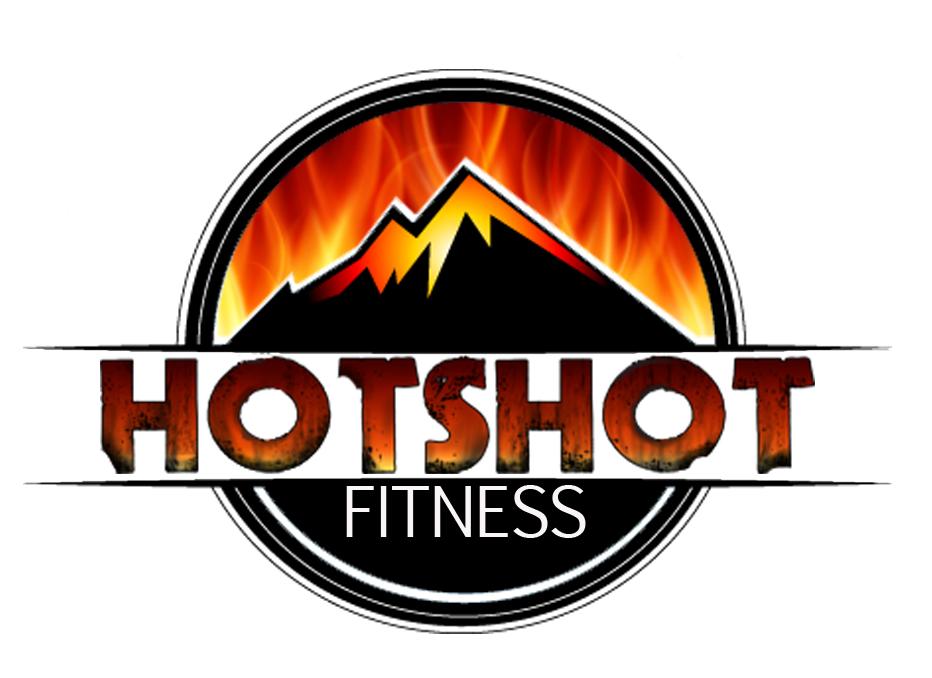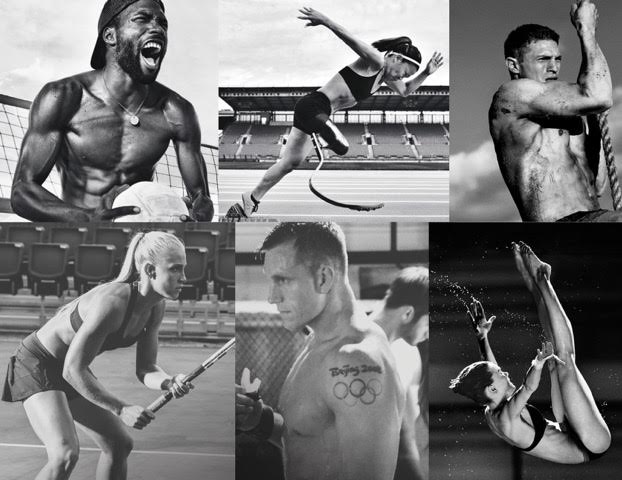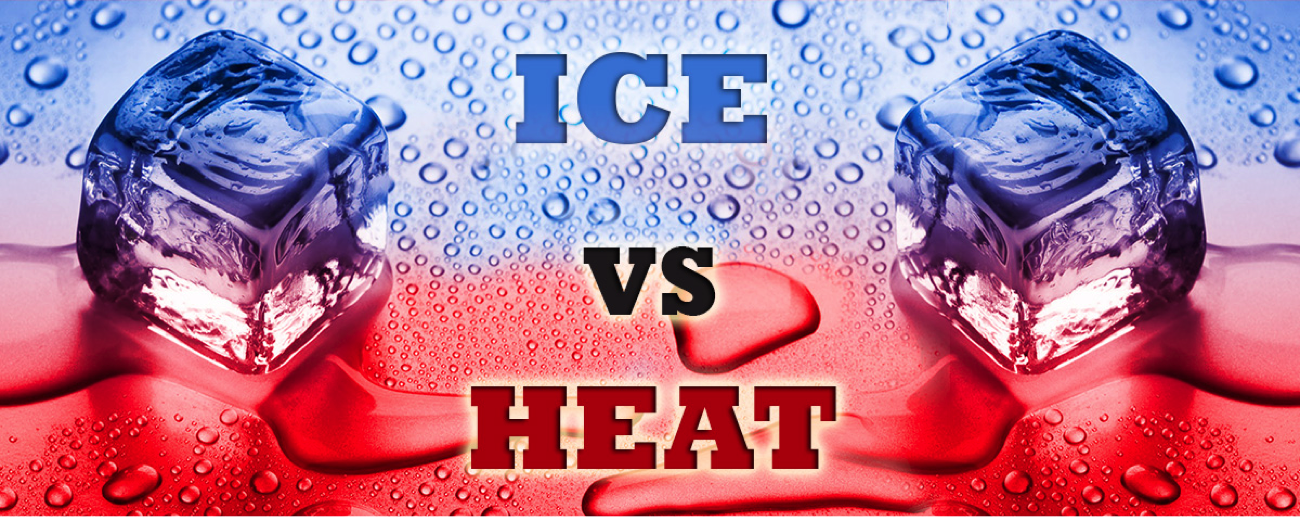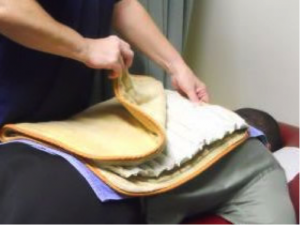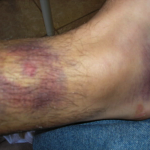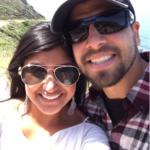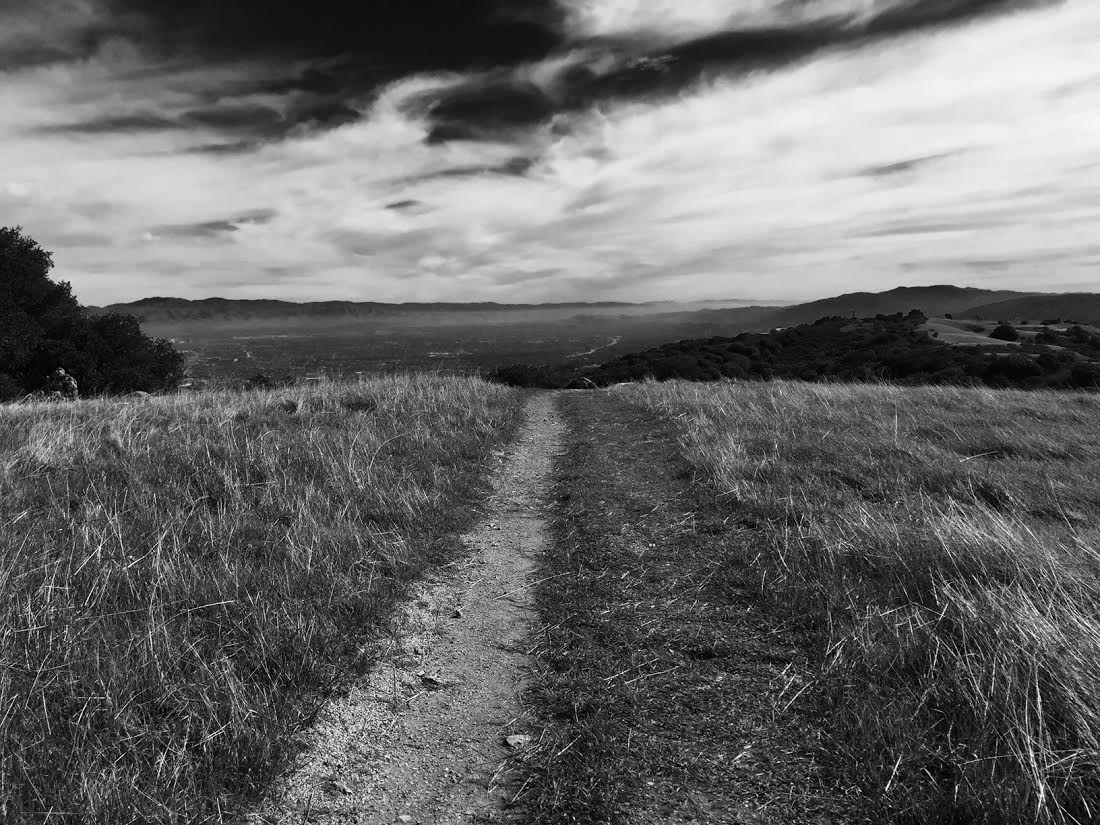Just wanted to share an opportunity with the HF Community. I was contacted by Jen Maxwell, who’s handling casting for an advertising campaign for Isopure. They’re looking to feature wildland firefighters in an upcoming ad campaign. Interested? Details below.
Note: The deadline to apply is 5pm August 8 – it’s coming up quick!
——————————
BY: Anthony Harrell
Young or old, in shape or out of shape, muscle soreness happens to everybody. Like death and taxes, if you spend time pushing the physical limits of your body, you’re going to wake up sore. That part is inevitable. But what can you do to reduce those symptoms? What can you do to expedite your recovery? Like stretching, most people rely on a blend of outdated information and old wives tales to deal with pain. We here at Hotshot Fitness think that’s ridiculous. So we wanted to dig deeper into one of the most perplexing questions of our time. More perplexing than who shot Kennedy, or where Hoffa’s body is buried, is that age-old question of “My body hurts…should I ice it or heat it?
“No Pain, No Gain?”
Training for the job is as important as being on the fireline itself and there’s nothing worse than dealing with the unnecessary aches and pains holding you back. The phrase “no pain, no gain” has a time and a place. However, if you are noticing swelling, increased warmth of the skin around the painful site, or discoloration, then it’s time to drop the machismo and handle your business the right way.
Heat
Everyone likes the feeling of soothing angry muscles at the end of a long day. Hot packs are a common self-treatment option, however, have you ever wondered just what is going on underneath your skin when you put a hot pack on? Fortunately for you, we have done some science!
Effects on the Body
Heat essentially decreases the sympathetic (sometimes called “fight or flight”) response of those muscles that you brutalized during your last hike. When you add a hot pack to a sore spot, receptors for heat within the skin are activated causing the blood vessels surrounding that site to open up and allow more blood flow (Bickford and Duff, 1953). The threshold of pain that you can tolerate is then elevated, activating neurological mechanisms to reduce spasms within the muscle (Cameron, 2013). The heat allows for chemical reactions within the area to speed up and bring more nutrients and oxygen to the injured or site. More nutrients and oxygen = faster heal times.
Physiology 101
When to use it
If you are experiencing an acute injury or pain, then heat is typically not recommended. The reason being that your body has its own set of procedures it goes through to begin the healing process whenever damage is detected! When you sprain your ankle for example, you will notice swelling and very often increased warmth and discoloration around the joint. The body has began working to bring nutrients to the site, and is setting up protective mechanisms to keep you from re-injuring yourself. By applying heat to an immediately injured joint, you could increase the amount of swelling which might further inhibit your ability to activate the muscles in and around the injury. Interrupting muscle activity around a joint can lead to instability and further put you at risk for re-injury (Palmieri-Smith, et al 2007).
Even though heat may not be the best option for a new tweak you experienced during morning PT, there are other useful times to reach for the hot pack. If you are rolling out of bed and noticing your body seems stiff or takes longer than in the past to warm up, heat might be for you. Studies have shown that heat makes your body’s tissues more extensible by aiding in the reorganization fibers (Cameron, 2013). Other good uses for that heat pad include treating injuries that occurred more than six weeks prior, relief of joints that may be aching due to arthritis, and decreasing muscle spasms (Cleveland Clinic, 2014).
Ice
Effects on the Body
While heat causes your blood vessels to vasodilate (basically, get bigger), ice has the opposite effect. When applied to the skin, cold objects like ice packs constrict blood vessels. allowing less blood to flow (Cameron, 2013). With less blood flowing through an area, swelling is reduced, which in turn alleviates pain caused by the compression of structures within the injured joint. The cooling of tissues also decreases the inflammatory process by reducing the amount of metabolic reactions that the body produces for protection and healing (Cameron, 2013).
When to Use It
If you had to choose hot or cold for that new nagging knee pain, ice would be the way to go. Researchers Ohkoshi, Ohkoshi, and Nagasaki (1999) actually found that the quicker that cold can be applied to an injury, the better chances at reducing some of the inflammation and pain that accompanies it. Inflammation typically occurs within 48-72 hours after injury which indicates that this would be an appropriate time to choose this treatment method. Furthermore, compressing the area and elevating it above the level of the heart helps to drive swelling into the body’s natural highway of blood flow and fluid movement (Cameron, 2013).
Finally, icing can be uncomfortable, but should always follow this progression (Cameron, 2013):
Hotshot Fitness Recommendations:
- If you have some new bumps and bruises, grab some ice.
- Ice for 15-20 minutes then take a break
- Don’t ice an area more than once an hour
- While icing, throw a compression like an ACE bandage around the site if possible and elevate the area above the level of the heart
- To help you remember what to do, here’s a handy acronym: RICE > Rest, Ice, Compression, Elevate
- Remember, the inflammation cycle lasts about 3 days and whilst icing is most helpful within this time, there are other things you can do. Tumeric has been found to reduce inflammation inside the body, in turn helping you to recover quicker, lose weight faster and train harder, so you might want to give these turmeric pills a try alongside icing.
- After inflammation has decreased, allow your body to run it’s natural course of recovery! If you want to give your body a natural boost, you might even want to consider trying out products such as CBDA oil that can, in some cases, ease your swelling. For more information about the potential health-enhancing benefits of CBDA oil, go to https://myriamshopehemp.com/product/cbda-oil/. On a similar theme, you could also try CBD cream. The anti-inflammatory properties will help your body to reduce inflammation. There are CBDistillery Coupons available to knock 25% off the price of these creams.
Ultimately, if you are getting worse or seeing no improvement, then visit a doctor. (Editorial Note: Not going to the doctor might have been cool for your grandfather’s generation, but let’s not forget that’s the same generation that thought smoking was healthy and drinking during pregnancy was no biggie.)
- If you are dealing with an old nagging injury, heat or ice can be helpful! You know your body best, so try either one. When using heat, follow the same timing parameters and always protect yourself with towels between your skin and the hot pack
[highlight]Bonus: Interested in learning how to make your own cold pack? We got you covered over in our DIY series. With just a Ziploc bag, some rubbing alcohol, and some water, you can make your own cold pack! Seriously. It is ridiculously easy. Check it out![/highlight]
About the Author:
Anthony Harrell spent three years with the Ukonom Hotshots. His adventures in fire inspired him to pursue a career in Physical Therapy, and he recently graduated from the Doctor of Physical Therapy program at the University of California, San Francisco (UCSF) / San Francisco State University.
He lives in the San Francisco Bay Area with his wife, Julie, and their dogs. He has been a contributor to Hotshot Fitness since 2016.
Interested in writing for us? Check out our contributor guidelines for more information.
The first day with your new crew will always be nerve wracking. You don’t know anybody. You’re worried that they might not like you. And no matter how hard you trained in the off-season, you’re terrified that everyone else is going to be in better shape than you are. We know the feeling. No matter what industry you work in, those first few days in a new role can be some of the most challenging days of your life. Lots of people turn to herbal remedies like mercedes hash to calm their nerves so that they have a chance of making a good first impression, and because we’ve been there before, we have also prepared a few tips to help smooth the transition to your new crew.
1 – Get on Their Schedule. All hotshot crews PT first thing in the morning. At the start of the season, that’s going to be 8am. If you’re used to exercising in the mid-afternoon or evening, that switch to a morning routine might take some getting used to. Better to do it in the weeks leading up to the season than before. Some people need to eat a meal before they PT in the morning – others not so much. For some folks, orange juice gives them heartburn if they drink it before they PT. Does the amount of coffee you drink in the morning impact your performance? These are all questions you want to have answers to before you show up at the station. Better to develop your routine before than work on figuring it out on the fly once the season starts.
2 – Acclimatize. If there’s a major difference in elevation (more than 1,000′) your body needs time to adjust. If you’re coming from sea-level and the station sits at 3,500 feet, don’t expect to show up the night before and be at the top of your game the next day. Your reputation is formed on Day 1. How you carry yourself, how you PT, all of that gets quickly established. And once your reputation is earned, it’s tough to change. You can either lag behind or pant like a blood hound on a manhunt and complain about the elevation…or you can show-up early, acclimate, and perform at an optimal level from Day 1. It’s your choice.
3 – Temperature-ize. That’s not a word. But you understand what we’re getting at. Much like the body needs to acclimate to changes in elevation, your body is sensitive to differences in humidity and temperature. While you can attempt to replicate temperature differences (PT’ing during the coldest part of the day (early morning) or loading up on layers to simulate hot environments) there’s no better substitute than showing up early and getting a few easy PTs in on-location. Plus, it’ll help you determine what clothes you’ll be most comfortable exercising in. Fear of the unknown is a big anxiety trigger. If you are prone to experiencing anxiety attacks, it might be worth viewing some of the treatments offered at https://doorstepsuppliers.com/shop/. By reducing the number of surprises on Day 1, you’ll help calm some of the pre-season jitters. Many people decide to try something such as marijuana to try and decrease their levels of anxiety without providing themselves with enough knowledge first, this could often end with a person suffering from anxiety consuming marijuana compounds that could exacerbate their condition. Should you want to find marijuana products, or specific cannabinoids that can help with anxiety, such as CBD, then perhaps have a look into reviews of different products available. You could even look somewhere such as here at https://bumped.in/verma-farms-discount-coupon-review/ for coupon codes to reduce your total expenditure when purchasing your medicine!
4 – Walk the Walk. Before you arrive, ask someone on the crew where their running and hiking trails are. It’ll help to calm your nerves if you go out and run or hike one of their trails in advance. Even just casually walking a trail will help because you’ll know what to expect. And you won’t be tossing and turning the night before imaging some hellacious trail run second only to the Bataan Death March in terms of misery. When you do go out, take it slow and note the terrain. Where are the downhills and flat sections where you can catch your breath? How’s the footing? Any hazards you need to keep an eye out for?
5 – Break’em in. Make sure all your gear is trail-tested, and that your boots and shoes are properly broken in, otherwise this could cause some severe pain to your feet/ankles, and no one wants that. One minute you’re absolutely buzzing to go on this trek and the next thing you know you’re having to Visit this website in order to buy some form of treatment to relieve that excruciating pain Don’t show up on Day 1 with gear you’ve never run or hiked in. Plus, you’ll look like a total n00b if your running shoes and / or boots still have a showroom shine. You don’t want to discover that your new running shorts chafe like a bastard on your first run with the crew. You’re a hotshot – a certain level of professionalism is expected.
6 – Visualize Your Best Performance. This might sound a little bit mystical but we promise there’s no chanting or Yanni concerts involved. Professional athletes, Olympians, Kung Fu masters – even Andre Freakin’ Agassi (remember him?) have been harnessing the power of visualization for years to achieve peak results. So take some time to close your eyes and imagine yourself running with the crew. You’re feeling great, your stride is perfectly balanced, your breathing is dialed-in, and you feel good. You feel like you could run a hundred miles. Then imagine yourself hiking. Your pack is snug on you back, your steps are measured, and your pace is perfect. Imagine how beautiful the surroundings are, the smell of pine in the air, and remind yourself how luck you are to have a job like this. Imagining yourself achieving a high-level of performance has been clinically-proven to reduce pre-performance anxiety and improves game-day performance. Jason Selk’s book 10-Minute Toughness is a good, no-frills look at the power of visualization. If NFL linebackers are using these techniques, it’s legitimate.
Do you have some other suggestions for preparing for your first day? Let us know in the comments below.
This is a Big Day. For over eight years, Hotshot Fitness has been an enterprise of one.
But as of today, that changes. because former Ukonom Hotshot, and newly-minted Doctor of Physical Therapy, Anthony Harrell will be joining the Hotshot Fitness team as a contributing writer! Anthony will be covering a host of topics for us including:
- Injury Prevention & Treatment
- Physical Rehabilitation
- Dynamic Stretching & Static Stretching Techniques
- Strength Training (Calisthetics, Plyometrics, etc.)
- Endurance Training
- Expert Interviews
- And, quite frankly, whatever else he wants to focus on.
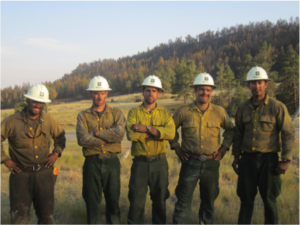 Anthony is passionate about two things: 1.) Helping people achieve optimal performance and 2.) the Wildland Firefighting community. This guy has literally spent the last few few years devoted to the study of how wildland firefighters can become better. Honestly, this is why Hotshot Fitness was founded. When Anthony approached me about writing for the site, I was thrilled. Back in 2008, when I created Hotshot Fitness, I wanted to create a community that fostered the development and dispersion of best-in-class ideas. I wanted the wildland community to have access to the most cutting-edge research and the best practices available. Because I believe that when it comes to firefighting, physical fitness is a safety factor. Anthony brings an academic rigor that far surpasses my knowledge of physiology. But it is knowledge that is tempered by experience. He’s been a hotshot. He’s cut line through chaparral jungles. He’s suffered, and he’s overcome. And he knows what it takes to succeed in this smoke-filled world. He knows fire. He knows strength and fitness. And most importantly – He’s worn the boots, and pulled the shifts.
Anthony is passionate about two things: 1.) Helping people achieve optimal performance and 2.) the Wildland Firefighting community. This guy has literally spent the last few few years devoted to the study of how wildland firefighters can become better. Honestly, this is why Hotshot Fitness was founded. When Anthony approached me about writing for the site, I was thrilled. Back in 2008, when I created Hotshot Fitness, I wanted to create a community that fostered the development and dispersion of best-in-class ideas. I wanted the wildland community to have access to the most cutting-edge research and the best practices available. Because I believe that when it comes to firefighting, physical fitness is a safety factor. Anthony brings an academic rigor that far surpasses my knowledge of physiology. But it is knowledge that is tempered by experience. He’s been a hotshot. He’s cut line through chaparral jungles. He’s suffered, and he’s overcome. And he knows what it takes to succeed in this smoke-filled world. He knows fire. He knows strength and fitness. And most importantly – He’s worn the boots, and pulled the shifts.
He’s one of us..
It’s not very often that a man of Anthony’s caliber and class approaches you with an offer to help. I’ll be frank, when he offered to contribute to the site, I couldn’t say yes fast enough. Over the next few months, I promise you that you’ll be impressed by the quality of content that he’ll contribute to this site. I’m excited…and you should be too!
So without any further adieu ( 😉 … Welcome to the team, Anthony! The wildland firefighting community is stronger because of your willingness to share your voice.
Thank you!
-Mike
Founder, Hotshot Fitness
P.S.
Interested in learning more about Anthony? You can check out his biography here, and his LinkedIn profile here.
